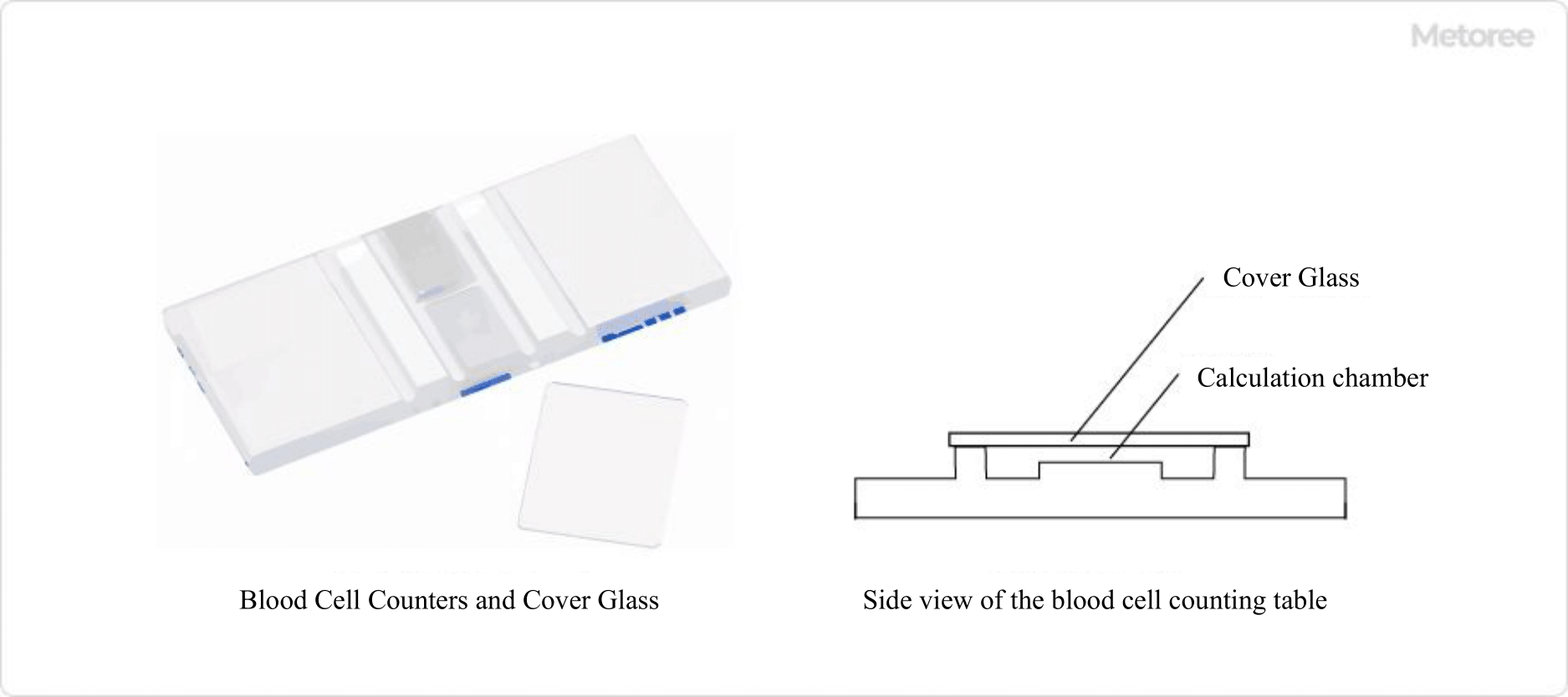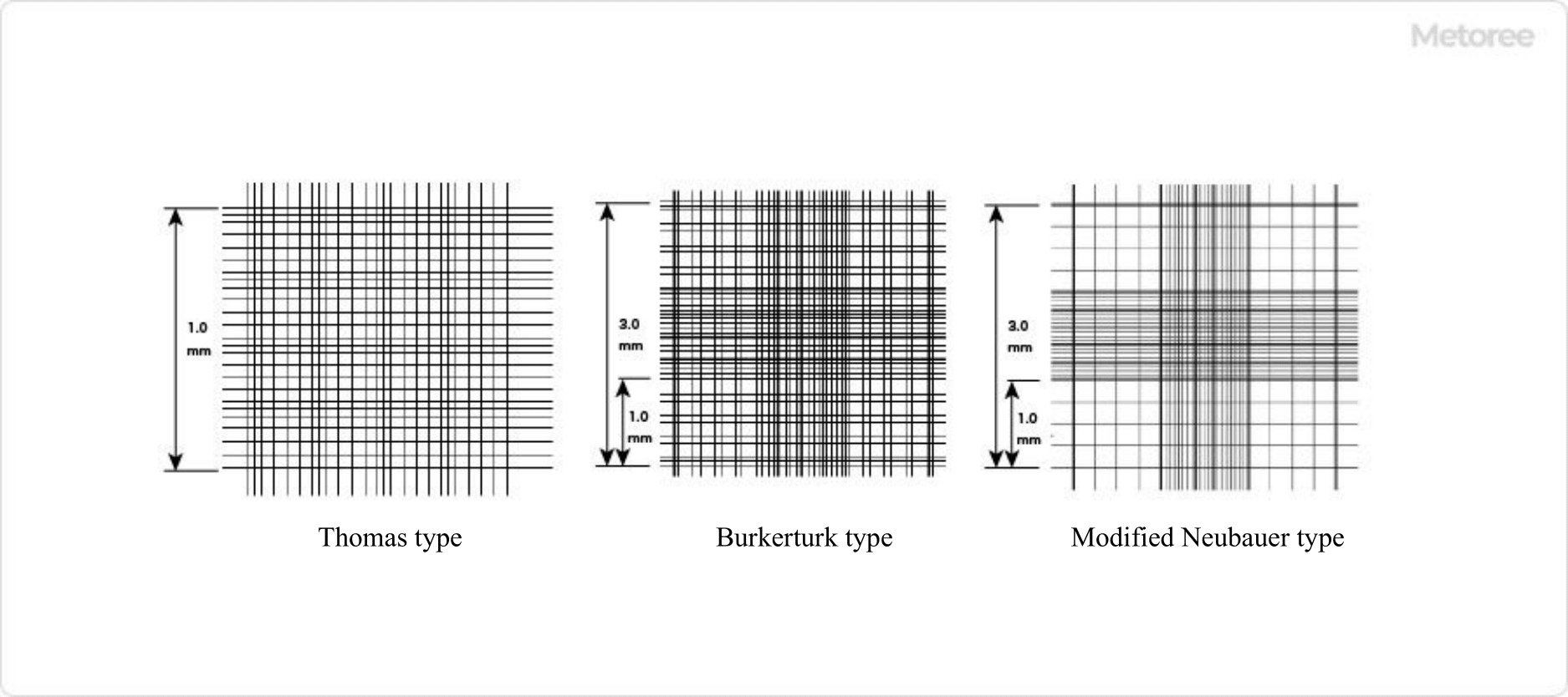What Is a Counting Chamber?

Figure 1. Overview of the blood cell calculator
A counting chamber is a tool used to count cells. It is also called a hemocytometer.
It is used for this purpose because it is necessary to count cells prior to cell fusion techniques or cell culture operations.
The size of cells varies depending on the object to be measured, such as blood cells (red blood cells, white blood cells, etc.), lymphocytes, or other cultured cells. For this reason, the scale width of the counting chamber is also different depending on the object to be measured.
Uses of the Counting Chambers
The counting chambers are used in research and development of cell-related technologies. By calculating cell counts, it is possible to calculate cell density, survival rates, and other necessary values. This is always done as a preliminary preparation for cell culture operations such as transfection, cell fusion technology, cryopreservation, etc.
Principle of the Counting Chambers
The counting chambers have series of equally spaced tick marks of different widths, each of which can be used to calculate a numerical value. The concentration of the suspension is adjusted so that there are about 100 cells within a frame of 1 mm per side, and the number of viable cells within a frame consisting of 16 squares is counted.
How to Use Counting Chambers and Cover Glass

Figure 2. Image of how a cell looks
1. Counting Chambers
First, the cells to be observed are collected and resuspended in culture medium, from which the cell suspension is collected and colored with a dye to classify live and dead cells. Dead cells are colored, but living cells are not, so the presence or absence of color is used to distinguish between living and dead cells.
It is important to adjust the concentration of the suspension to an appropriate level so that there are about 100 cells in the frame because if the concentration is too high, it is difficult to measure, and if it is too low, it cannot be measured correctly. Initially, the number of viable cells within a 1 mm square frame, the largest of which consists of 16 squares, is counted.
By measuring the number of live and dead cells through this operation, the cell viability can be calculated.
2. Cover Glass
The counting chambers are used with a cover glass adhered to it. The cover glass should be washed with ethanol and air-dried before use. Just before use, moisten the cover glass lightly with water and place it on the scale surface of the counting chambers. While being careful not to break the cover glass, apply light pressure as if rubbing the cover glass with your fingers to make it adhere closely to the counting chambers.
At this point, check for the presence of Newton rings to confirm that the glass is firmly adhered. Newton rings are rainbow-colored interference fringes that occur when glasses with the same percentage curve on their surfaces are superimposed on each other. They are not visible if dust or other contaminants have penetrated between the counting chambers and the cover glass.
If the Newton rings cannot be confirmed, wipe the surface of the counting chambers and the cover glass with a gauze or similar cloth moistened with an appropriate amount of ethanol, and repeat the same procedure. Note that the depth of the calculation chamber will change with dirt in it, and accurate counting will not be possible.
Some disposable products do not require a cover glass. In such cases, the labor of Newton ring creation can be eliminated.
Types of Counting Chambers

Figure 3. Various types of scales
1. Bürker-Türk Type Counting Chambers
There are several types of counting chambers, each with a different scale inscription and depth of calculation chamber. The most commonly used type is the Bürker-Türk type counting chambers.
It is a duplex calculator with two calculation chambers and can count a wide range of cells, including not only red and white blood cells but also sperm, bacteria, yeast, plankton, and cultured cells.
In the Bürker-Türk type counting chambers, the volume of each calculation chamber is 0.9 μL, and the scale lines are designed so that each side of the scale is 3 mm in both length and width.
This single side is further trisected into nine 1 mm x 1 mm blocks. The middle block is mainly used for counting cells with large absolute numbers, such as red blood cells, while the four corner blocks are used for counting cells with relatively small absolute numbers, such as white blood cells and cultured cells.
2. Other Counting Chambers
Other types of counting chambers include the Thomas type, which is a single-chamber, single-stage calculator, and the modified Neubauer type, which is a double-stage calculator similar to the Bürker-Türk type but with simpler graduation lines.